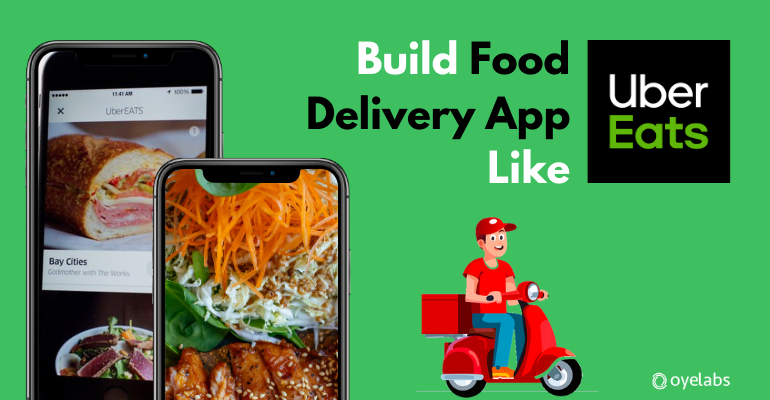
The food service sector has seen rapid expansion in recent years, driven by growing demand for effortless on-demand services. With platforms like UberEats and DoorDash revolutionizing the way people order food, the focus has moved to developing innovative food delivery apps. These apps provide users the ability to place orders from their favorite restaurants and have it brought right to their doorstep. For companies, the task is to leverage technology to improve delivery logistics and ensure a smooth user journey.
Building the Perfect Food Delivery App
Developing a profitable food delivery app demands a thorough understanding of the market trends and operational strategies that dominate the industry. Whether creating a comprehensive platform or focusing on niche markets like ghost kitchens or cloud kitchens, the app’s functionality needs to serve to both customers and restaurants. Essential elements such as order tracking, delivery time optimization, and user satisfaction indicators hold a vital role in ensuring user retention.
Restaurant Delivery Partnerships: A Winning Strategy
Restaurants are increasingly forming partnerships with delivery platforms to expand their customer reach. These partnerships help restaurants cater to a larger audience while minimizing the challenges of running their own delivery operations. The success of such collaborations depends on technology integration, which enhances the user interface design and improves the customer experience. Through these partnerships, restaurants can boost customer loyalty and ensure that they remain competitive in a saturated market.
How KPIs Drive Food Delivery Profitability
For any enterprise, knowing its performance metrics is crucial to maintaining profitability. In the food delivery sector, KPIs such as time efficiency, precision in orders, and user happiness are essential. Measuring and improving these KPIs allows delivery services to offer a better customer experience. Additionally, keeping an eye on financial success aids companies streamline operations, reduce charges, and increase overall efficiency.
Customer Satisfaction and User Retention Strategies
A significant element in the success of food delivery platforms is their capacity to retain users through excellent customer service. Offering fast food delivery and addressing user feedback swiftly can help companies enhance their service delivery. Moreover, introducing loyalty programs View More Information and providing incentives like no-cost delivery can enhance customer loyalty. Customer satisfaction can be additionally bolstered by ensuring quality assurance and providing a seamless processing system.
The Role of Technology in Food Delivery
Technology is at the heart of modern food delivery services, helping companies refine their operations and provide a seamless customer experience. From app creation to real-time order monitoring, tech integration plays a critical role in the success of delivery platforms. The application of data analytics to understand customer demographics and preferences allows delivery services to offer personalized experiences, furthermore enhancing user engagement.
Competitive Analysis in the Food Delivery Market
The delivery sector is highly competitive, with many players vying for market share. Conducting a competitive analysis enables companies to assess their position in the market and spot chances for growth. Delivery platforms must differentiate themselves by providing distinctive features such as ghost kitchen services, quick service, or specialized cuisine options. Understanding sector dominance and customer actions empowers companies to customize their services and stay ahead of the competition.
The Impact of the Pandemic on Food Delivery Services
The global health crisis has had a substantial impact on the delivery services, accelerating its growth as more people turned to on-demand apps due to social distancing guidelines. The change has emphasized the necessity of digital transformation UberEats in the food industry, with restaurants quickly adopting e-commerce platforms and delivery apps. As the world adapts to new routines, food delivery businesses must persist in innovating to satisfy changing consumer demands and ensure market expansion.
Investing in Food Delivery Startups
The delivery sector presents plenty of startup opportunities, with investors keen on support companies that provide unique solutions. From creating similar platforms to developing niche delivery apps, entrepreneurs have a variety of paths to pursue. Investors look for strong business models and the ability to grow, particularly in aspects like system efficiency, customer interface, and tech integration. By concentrating on these sectors, startups can secure significant investments and establish themselves in the market.
Enhancing Food Delivery Service Profitability and Expansion
Expanding a food delivery business demands a strong foundation built on customer acquisition, pricing strategies, and unique offerings. As regional platforms grow, businesses must concentrate on establishing a reliable delivery network and ensuring food safety. Furthermore, expanding the menu offerings, forming new collaborations, and integrating advanced technology in food delivery will propel further growth. By constantly enhancing delivery times and ensuring high user happiness, companies can maintain a competitive edge and boost revenue generation.
These themes provide a complete understanding of the service landscape, with a emphasis on key aspects that propel the industry forward. Whether whether you are a startup or an experienced company, concentrating on these areas will assist you succeed in the challenging world of food delivery.